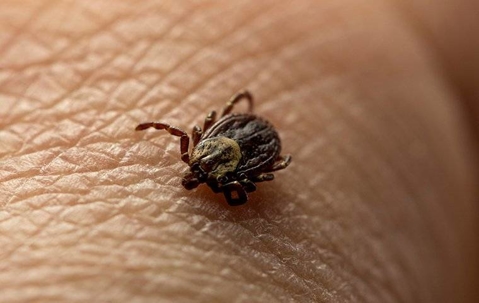Fleas vs. Ticks: How To Tell
While both of these parasitic pests are incredibly tiny, fleas and ticks actually can be seen by the naked eye. Both are blood-feeding parasites, but ticks belong to the arachnid family, rather than the insect family that most other biting pests belong to. Spotting the more subtle differences between fleas and ticks can be difficult for the untrained eye. However, here are some key traits to tell these critters apart:
- Bodies: As arachnids, ticks have circular body shapes, with legs splayed out from their bodies. Fleas, on the other hand, are built more top-to-bottom, with legs that are tucked underneath their ovular bodies.
- Legs: Speaking of legs, ticks have eight while fleas only have six. It’s not easy to count the legs on teeny tiny parasites, however.
- Jumping: Fleas may have fewer legs, but they are more powerful. Their large, rear legs allow them to pounce, leading to the belief that fleas can hop great distances. In reality, they can’t hop as far as other leaping bugs, but they do use their jumping skills to latch onto people and pests that wander by.
They Both Cause Problems
More important than being able to tell them apart is understanding that both ticks and fleas can be dangerous to your overall health. By their nature, parasites are unhealthy for us mammals, because they feed on the nutrients found in our bloodstreams. Their tiny bites may not bleed enough to be life-threatening, but they can lead to all of the following:
- Disease: Ticks are well-known carriers of Lyme disease, and even fleas can transmit diseases like typhus via their bites.
- Bites: While not every bite leads to an illness, they all lead to itchy red marks on the skin. They can take a while to go away, especially if the pest population isn’t addressed, and this can lead to extreme discomfort.
- Infection: Frequent scratching at the uncomfortable bite marks can increase the risk of infection at the source of the breaking skin. Not scratching is easier said than done, however.
Preventing Parasitic Pests
To avoid the nasty side effects of parasitic pests on your property, you have to take steps to avoid tracking them in or welcoming them into your yard. All of the following are important steps to take to limit your exposure to parasites.
- Landscaping: Both fleas and ticks like to wait on the tips of tall grasses or overgrown leaves for food sources to wander past. Keeping your yard trimmed will reduce the points that pests have to rest on.
- Crack sealing: Tiny little bugs can easily crawl through holes or cracks in your exterior to gain access inside your home or business. You should routinely check your outer walls for signs of needed maintenance.
- Inspections: Not only does this apply to yourself -- the need to check your clothing, skin, hair, and pets before re-entering your home -- this also applies to professional inspections. Only a trained set of eyes can fully check your property for signs of these pests.
Trust The Pest Professionals
With the need to protect you and your loved ones from parasites, pest control is a very real concern. While certain everyday methods can be implemented around your property to increase your odds of avoiding infestations, the only true protection comes from professionals. At Aerex Pest Control, our exterior inspections and treatments offer you the best chance of correctly identifying a flea or tick problem, before it has a chance to grow and become unmanageable. If pests are discovered, only expert solutions can get rid of them quickly and safely, without exposing you to the risk of bites.
To get started on flea and tick prevention, contact Aerex Pest Control today.

